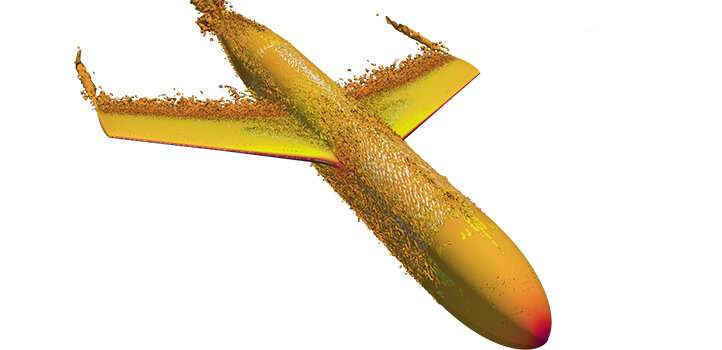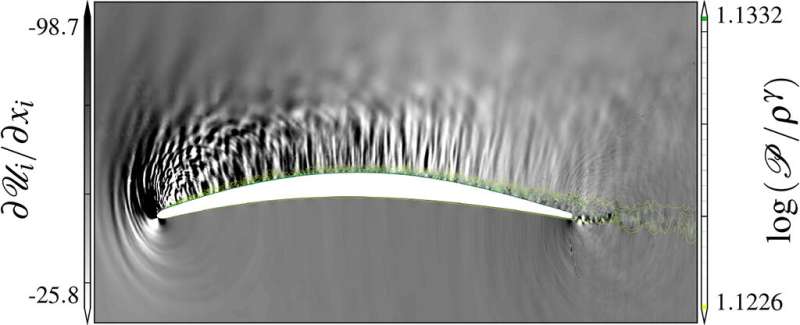Quieter wind beneath the wings

Efficiently simulating the noise generated by wings and propellers promises to accelerate the development of quieter aircraft and turbines.
A new simulation approach has enabled a first practical, and highly accurate, computation of the noise characteristics of complex three-dimensional airfoil designs under extreme operating conditions. By shortening simulations that would have taken months or weeks to run to just days or hours, the new approach could accelerate the development of quieter airfoil designs to enable the next generation of aircraft and urban airborne vehicles.
"Aircraft noise is already a problem for many communities located near major airports, and this will only get worse with the expanded use of drones and, in the future, air taxis and private airborne vehicles," says Radouan Boukharfane, a postdoc at KAUST.
Airfoils—wings, propellers and turbine blades—are typically designed and refined using relatively fast applied mathematical techniques. However, characteristics like noise generation are more complex. These typically require tests using experimental models because the direct numerical simulations capable of resolving such features are so computationally intensive that, even on today's fastest computers, they would take months to complete.
"In realistic engineering problems in aeroacoustics, the interactions between the turbulent airflow and the surface are important," says Boukharfane. "One of our main challenges was how to model compressible airflows across the surface under high turbulence with sufficient accuracy to predict the separation of the airflow over a smoothly curved surface and its reattachment near the trailing edge."
Rather than directly simulate the entire flow field at high resolution, Boukharfane, with colleagues Matteo Parsani, and Julien Bodart, applied a wall-modeled large-eddy simulation (WMLES) to model the near-surface flows at high resolution while reducing overall computational intensity by modeling only larger flow structures further from the airfoil.
"The WMLES approach used in this work allows us to reproduce many of the key qualitative features of the airflow seen in experiments, as well as noise-related characteristics such as the wall pressure spectra. Importantly, we have also shown that the method is valid for high speed and highly turbulent flow," says Boukharfane.

The algorithm described in the paper is the latest in a suite of tools developed by the Advanced Algorithms and Numerical Simulations Laboratory, and builds on a collaboration with the Higher Institute of Aeronautics and Space in France under the Clean Sky Joint Undertaking of the European Union. Some of these tools are currently being used and tested by NASA, Airbus and the National Institute of Aerospace in Virginia.
"Our team is uniquely placed at the intersection of numerical analysis, physics, and high-performance computing to develop novel and efficient algorithms that better account for physical phenomena and efficiently utilize modern computing architectures," says Parsani.
More information: Radouan Boukharfane et al. Characterization of pressure fluctuations within a controlled-diffusion blade boundary layer using the equilibrium wall-modeled LES, Scientific Reports (2020). DOI: 10.1038/s41598-020-69671-y
Journal information: Scientific Reports




















